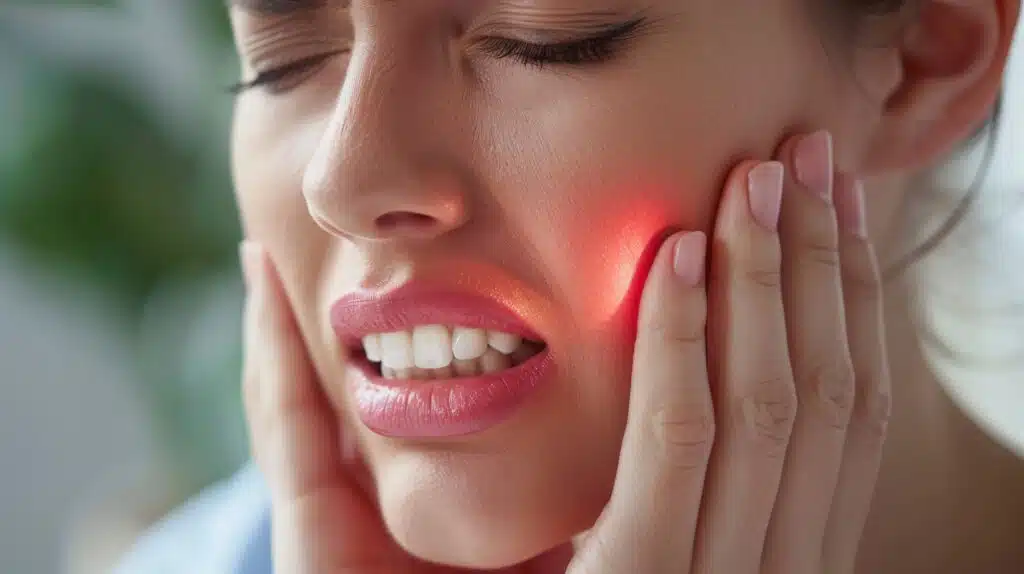Temporomandibular Joint Disorder (TMJ) is a condition that affects millions of people, causing chronic jaw pain, tension headaches, and difficulty chewing. For those who suffer from TMJ treatment in San Diego, finding an effective and long-lasting solution is a priority. While traditional treatments such as mouthguards, physical therapy, and anti-inflammatory medications can help manage symptoms, Botox for TMJ has gained popularity as a non-invasive and effective alternative.
If you’re considering Botox for TMJ treatment in San Diego, understanding how it works and its benefits can help you decide if it’s the right option for you.
What is TMJ?
The temporomandibular joint (TMJ) is the hinge that connects the lower jaw (mandible) to the skull. This joint plays a crucial role in everyday functions such as talking, chewing, and yawning. When the TMJ is functioning properly, these movements are smooth and painless. However, when problems arise with the joint, it can lead to Temporomandibular Joint Disorders (TMD), which cause discomfort and limited jaw mobility.
TMJ disorders can affect one or both sides of the jaw and may be temporary or chronic. Because the TMJ is one of the most frequently used joints in the body, any dysfunction can significantly impact daily life.
Causes of Temporomandibular Joint Disorders
There is no single cause of TMJ disorders, as the condition can develop due to various factors. Some of the most common causes include:
- Teeth grinding (bruxism): Chronic grinding or clenching puts excessive pressure on the TMJ, leading to muscle strain and inflammation.
- Jaw misalignment: An improper bite or uneven pressure on the jaw can contribute to joint dysfunction.
- Injury or trauma: A direct injury to the jaw, face, or head can damage the TMJ, causing pain and restricted movement.
- Stress: High-stress levels often result in unconscious jaw clenching, worsening TMJ symptoms.
- Arthritis: Osteoarthritis and rheumatoid arthritis can lead to joint degeneration, affecting the function of the TMJ.
- Habitual behaviors: Chewing gum excessively, biting nails, or frequently eating hard foods can strain the jaw over time.
Understanding the causes of temporomandibular joint disorders is crucial in choosing the right treatment approach. While lifestyle changes and stress management can alleviate mild cases, more persistent symptoms may require advanced treatments like Botox for TMJ.
Symptoms of TMJ
TMJ disorders can present a variety of symptoms, ranging from mild discomfort to severe pain that interferes with daily activities. Common symptoms of TMJ include:
- Jaw pain or tenderness: Persistent pain around the jaw joint, especially when chewing or speaking.
- Clicking or popping sounds: Noises when opening or closing the mouth, which may or may not be accompanied by pain.
- Locking of the jaw: Difficulty opening or closing the mouth fully, sometimes causing temporary jaw locking.
- Headaches and ear pain: TMJ issues often cause tension headaches and earaches due to pressure on surrounding nerves.
- Facial pain or swelling: Inflammation and discomfort that extend beyond the jaw, sometimes affecting the cheeks and temples.
- Neck and shoulder pain: Misalignment in the jaw can lead to tension in the neck and shoulders.
If these symptoms persist and interfere with normal function, seeking TMJ treatment in San Diego can provide much-needed relief. Botox has emerged as a promising treatment option for managing TMJ-related pain and muscle tension.
What is Botox?
Botox, short for botulinum toxin, is a purified neurotoxin that has been widely used for both medical and cosmetic purposes. While most people associate Botox with wrinkle reduction, it has gained recognition as an effective treatment for muscle-related conditions, including TMJ disorders.
Botox works by temporarily relaxing muscles and blocking nerve signals that trigger excessive muscle contractions. In the case of TMJ, Botox helps relieve tension in the jaw muscles, reducing pain and preventing involuntary clenching or grinding.
Since Botox is minimally invasive and requires no surgery, it has become a popular alternative for TMJ sufferers looking for pain relief without the risks associated with more aggressive treatments.
How Does Botox Work to Treat TMJ?
When used for TMJ treatment in San Diego, Botox is injected directly into the affected jaw muscles, typically the masseter and temporalis muscles, which are responsible for chewing and jaw movement. These injections block nerve signals, causing the muscles to relax and reducing the strain on the TMJ.
The effects of Botox are not immediate, but most patients start noticing improvements within a few days to a week. Full relief typically occurs within two weeks, with results lasting three to six months. Once the effects wear off, additional injections may be needed to maintain long-term relief. To better understand the step-by-step procedure and post-treatment care, read what to expect during your Botox treatment.
Because Botox does not alter the structure of the jaw or teeth, it is a safe and reversible treatment option for patients who want to explore non-surgical solutions.
Benefits of Botox for TMJ Treatment
Patients experiencing TMJ pain often struggle with persistent discomfort and limited jaw mobility. Botox offers several advantages for managing TMJ-related symptoms, making it an attractive option for many individuals.
One of the primary benefits of Botox for TMJ treatment is pain relief. By relaxing overactive jaw muscles, Botox reduces tension and inflammation, alleviating jaw pain, headaches, and facial soreness. Many patients report a significant reduction in discomfort after their first treatment.
Another major benefit is the reduction of teeth grinding (bruxism). Chronic clenching and grinding contribute to TMJ issues, wearing down teeth and straining the jaw. Botox injections help prevent involuntary clenching, protecting both the TMJ and tooth enamel from further damage.
Unlike surgical interventions, Botox offers a non-invasive approach to treating TMJ disorders. The procedure is quick, typically taking 15 to 30 minutes, with minimal downtime. Most patients return to their daily activities immediately after treatment.
Additionally, Botox can enhance facial esthetics by softening the jawline. Patients with enlarged masseter muscles due to chronic clenching may notice a slimmer, more contoured facial appearance over time.
Another advantage of Botox for TMJ is its long-lasting effects. While traditional treatments like pain relievers or physical therapy require ongoing daily efforts, Botox provides sustained relief for months at a time. Regular treatments can gradually retrain the jaw muscles, reducing the frequency and severity of TMJ symptoms over time.
For individuals struggling with chronic TMJ pain, Botox can be a life-changing solution that improves both comfort and highlights the benefits of botox in everyday life.
Is Botox Right for Your TMJ Treatment?
If you suffer from persistent jaw pain, clenching, or headaches related to TMJ, Botox could be an effective treatment option for you. Patients who have not found relief from traditional treatments such as mouthguards or physical therapy may benefit from Botox’s ability to relax tense jaw muscles and provide lasting relief.
A consultation with a TMJ specialist in San Diego can help determine if Botox is the right choice for your specific needs. At SD Sleep & TMJ Center, we offer customized TMJ treatments tailored to each patient’s condition and symptoms. Whether you’re considering Botox for TMJ treatment or exploring other solutions, our team is here to help you achieve lasting relief and improved jaw function.
If TMJ pain is interfering with your daily life, scheduling an appointment for TMJ treatment in San Diego could be the first step toward a pain-free, more comfortable future.


